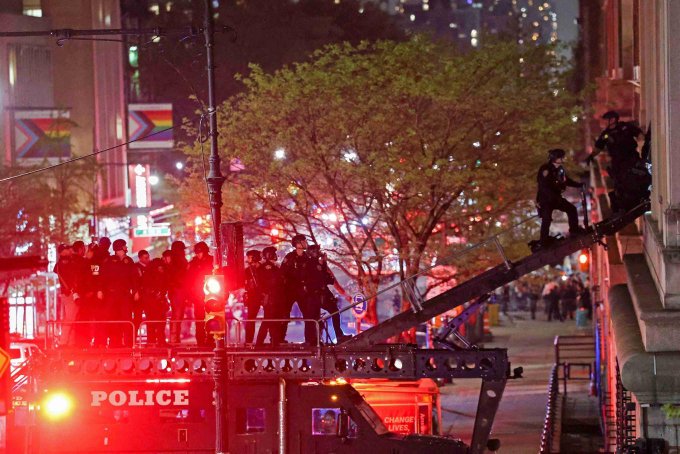In a dramatic turn of events, several hundred NYPD officers descended upon Columbia University’s campus on Tuesday night to disperse a group of pro-terror demonstrators who had illegally seized control of an academic building amidst ongoing anti-Israel protests.
According to police sources, the officers moved swiftly to clear out the protesters who had forcefully entered Hamilton Hall early Tuesday morning, marking a significant escalation in tensions at the Ivy League institution. New York police make around 100 arrests at Columbia University.
Also Read: Netanyahu Asserts Intent to Invade Rafah Despite Truce Talks
Emergency Service Unit officers arrived at the Morningside Heights campus at 9:13 p.m., encountering resistance at the barricaded building’s front door. Despite this, within minutes, officers deployed the NYPD’s Mobile Adjustable Ramp System (MARS) to access the building through a second-floor window.
Clad in riot gear and armed with zip-tie handcuffs, the officers made multiple arrests within just 20 minutes, swiftly bringing the situation under control. Many of the protesters, some wearing surgical masks or keffiyehs to conceal their identities, were escorted out of Hamilton Hall and loaded onto NYPD buses.
Throughout the operation, tensions ran high, with protesters shouting anti-Israel slogans and insults at the officers. Meanwhile, Columbia University dormitories were placed on lockdown due to the civil unrest stemming from the protests.
In a statement issued shortly after the police intervention, Columbia University expressed regret at having to resort to law enforcement to address the situation. The administration cited the occupation, vandalism, and threats directed at university personnel as reasons for involving the NYPD.
The decision to call in the NYPD was made preemptively by the university, hours before Police Commissioner Edward Caban confirmed the department’s readiness to intervene if necessary.
Responding to criticism from some quarters, university officials stressed that the intervention was a response to the actions of the protesters rather than the cause they were championing. They emphasized the importance of upholding campus rules and the law, stating, “We will not risk the safety of our community or the potential for further escalation.”
The swift and decisive action by the NYPD followed weeks of tension on the Columbia campus, including the establishment of a makeshift protest camp by student demonstrators. Those arrested during the police operation inside Hamilton Hall face charges including third-degree burglary, criminal mischief, and trespassing.
As the university and law enforcement officials work to restore order, questions remain about the underlying issues driving the protests and the broader implications for campus security and freedom of expression.



